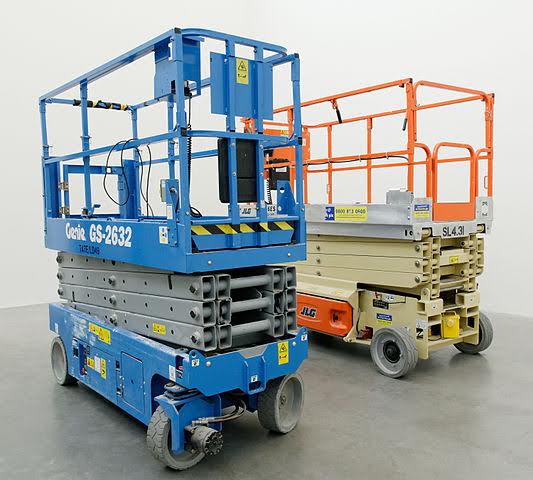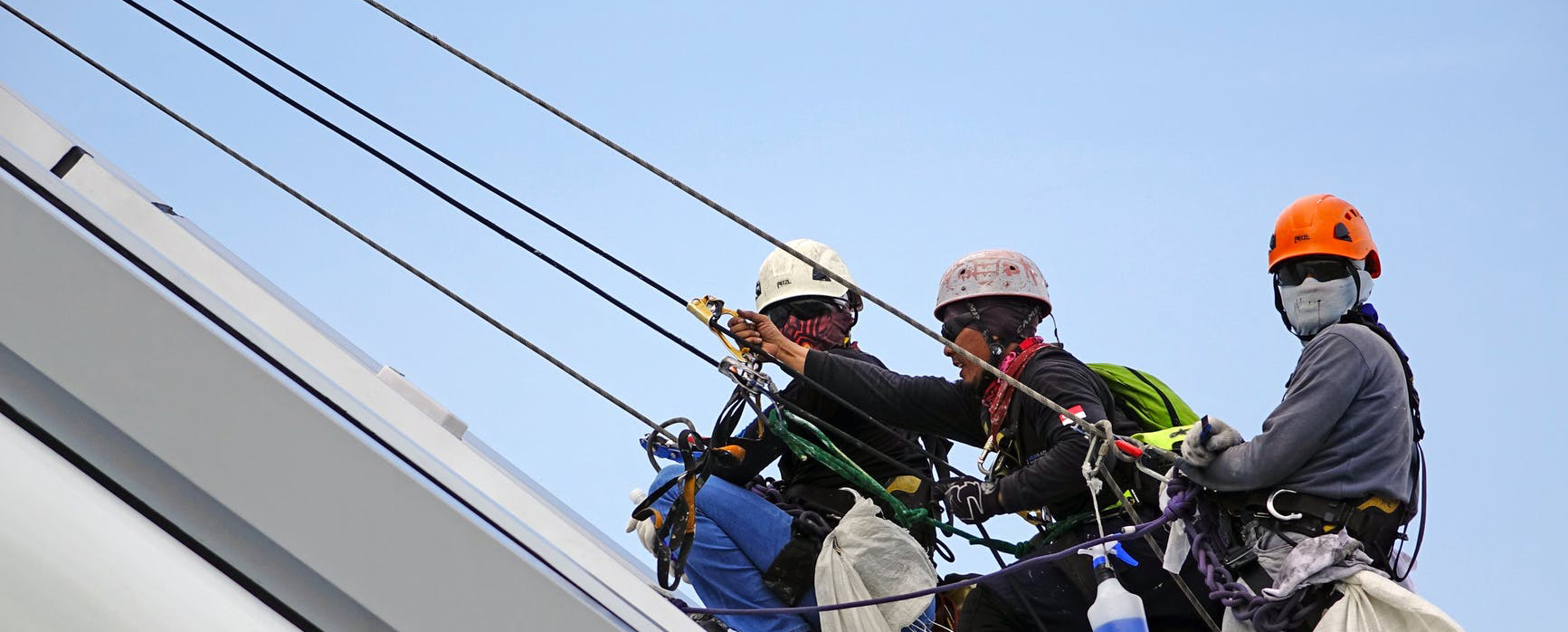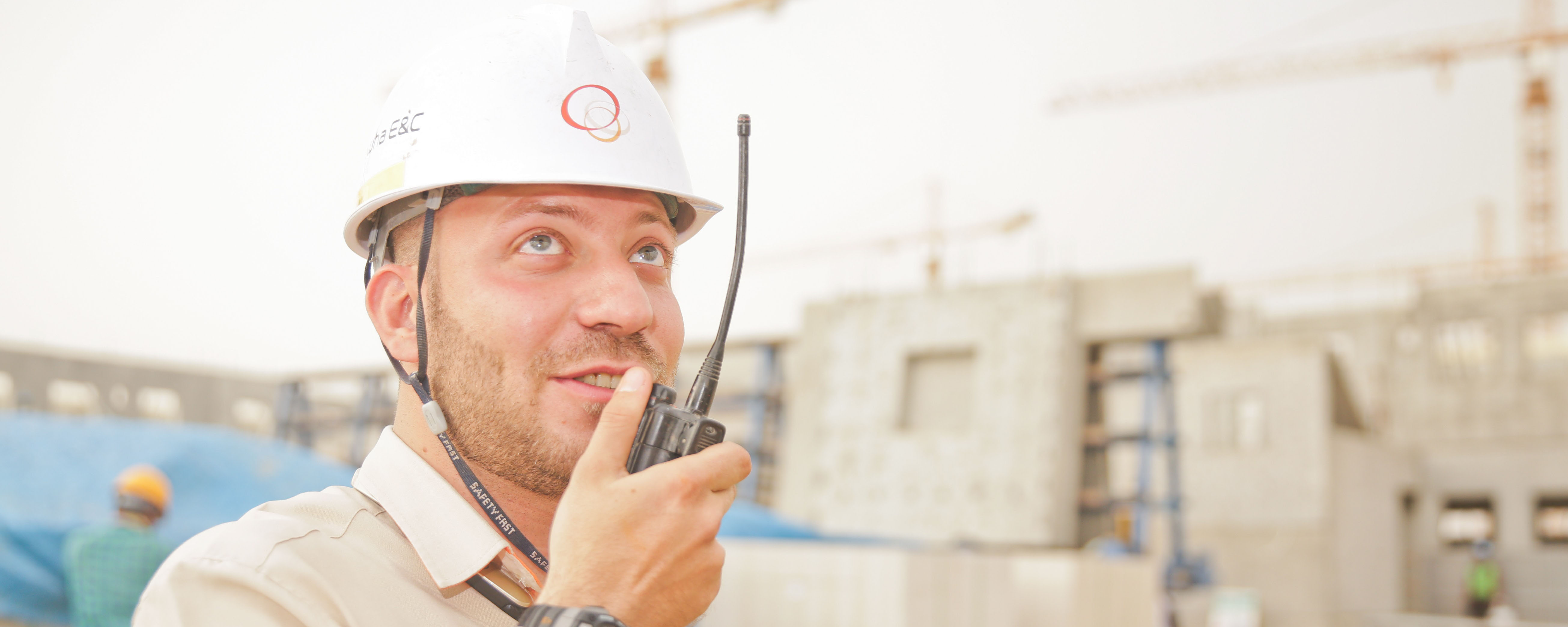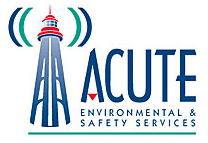
Elevating work platforms (EWPs) allow workers to temporarily work at heights, and require proper know-how and training to use safely. Read on for our full guide, and know you can trust the experts at ACUTE for all your workplace safety needs – contact us today!
ACUTE’s Full Guide to Elevating Work Platforms
1. Basic Types Of Elevating Work Platforms
There are two basic types of elevating work platforms you might come across on the job: scissor and boom. According to the Infrastructure Health and Safety Association, scissor platforms “are raised and lowered by hydraulic pistons and an expanding scissor mechanism. Platforms are available in various configurations with different capabilities for extension and movement. Some have extendable platforms or platforms that can rotate.” Scissor-type machines range in capacity from 500 to several thousand pounds (227 – 500+ kilograms) and are available with platform heights often reaching 15 metres (50 feet) and beyond.
A boom lift, on the other hand, is defined as “a maneuverable vertical boom with an open bucket or cage at the end from which a worker can perform aerial work such as pruning trees or repairing electrical lines.” They have a lifting capacity of about 500 pounds (227 kilograms) or two workers, and therefore lack the capacity of scissor-type machines. They can, however, extend with the use of telescopic or articulating arms by hydraulic cylinders with a reach that can extend well beyond the wheelbase.
 Examples of elevating work platforms.
Examples of elevating work platforms.
Both types come in on-slab models for use on smooth hard surfaces like concrete or pavement, and rough-terrain models for use on firm, level surfaces such as graded and compacted soil or gravel. Here’s a look at the characteristics of each model:
On-Slab:
- Not designed for uneven or sloping ground
- Normally have solid rubber tires
- Generally powered by rechargeable DC battery, but some are powered by internal combustion engine,
either gasoline or propane - Most have “pothole protection” in the form of a metal plate lowered close to the ground to afford some protection against inadvertent movement into depressions or debris.
Rough Terrain:
- Similar in design to on-slab machines, but built to handle rigorous off-slab challenges
- Normally have wider wheel bases, larger wheels, and pneumatic tires
- Some fitted with outriggers for extra stability
- Usually powered by internal combustion engines (gasoline, diesel, or propane); DC units are available but not common
- Lifting mechanism is hydraulic.
 Be prepared when working at heights.
Be prepared when working at heights.
2. Factors To Consider Before Using Elevating Work Platforms
Before getting a lift, either a scissor or boom, there are certain things you need to give serious consideration, so be sure to ask at least the following questions:
- Capacity – Does the machine have the lifting capacity, the reach, and the height to complete the task?
- Surface conditions – Are the surface conditions hard or soft, sloped or level? Will the ground have an effect on the type of machine selected?
- Platform size and configuration – Do you need a regular or extendable platform? Is rotation
required? Are there space restrictions to consider? - Mobility – Is a boom type better suited than a scissor lift to the task at hand?
- Material to be lifted – Will the machine be able to lift the size and weight of material required for the job?
- Access – Will the machine be able to travel around the workplace safely? Are there obstructions or
depressions that will restrict the use of certain machines? - Operator skill or training – Are the people on site competent to operate the machine? Has the
operator received proper training? - Work environment – If the work is to be done indoors or in a poorly ventilated area, will an
electrically powered machine be required?
 Be sure to assess all the variables involved in working with elevating work platforms.
Be sure to assess all the variables involved in working with elevating work platforms.
3. Potential Hazards and Mistakes
While using an elevating work platform, you must always be aware of potential hazards, whether natural or caused by operational mistakes. Let’s examine a few.
Machine tipping or overturning: Many factors cause instability – sudden stops, depressions, drop-offs, overreaching, overloading, etc. Overturning and tipping can result in serious injuries and even fatalities.
Overhead powerlines: Working near overhead wires can result in electrocution.
Makeshift extensions: When the machine can’t reach the working height desired, don’t improvise by using scaffold planks, ladders, blocks of wood, or other makeshift arrangements. This can lead to machine instability and falls.
Overloading the platform: Elevating work platforms that are overloaded or loaded unevenly can become unstable and fail. Boom-type machines are especially sensitive to overloading, so always stay within the operating range specified by the manufacturer.
Failure to set boundaries: It’s important to properly cordon off the work area in order to avoid being struck by other construction equipment or oncoming traffic. Workers can be injured if they inadvertently enter an unmarked area and are struck by falling material, tools, or debris. Additionally, moving the machine or platform may cause contact with workers or with obstacles, so make sure there’s a designated signaller on the ground to guide the operator when the path of travel isn’t clear or access is tight.
Improper access: Do not access the platform by climbing the scissors or the boom, and do not use extension ladders to gain access as this can cause overturning. For the safest access, lower the machine completely.
Moving with platform raised: Lower the platform before moving the machine. Slight dips and drops are amplified when the platform is raised and can cause the machine to overturn. Only move the machine with the platform raised if the following conditions are met:
1. The machine is designed to move with the platform raised.
2. The supporting surface is smooth and level.
3. Workers are protected by using and wearing an adequate means of fall protection.
Read on for more in regards to best practices and required training for elevating work platforms.
 Communication is key when using elevating work platforms.
Communication is key when using elevating work platforms.
4. Responsibilities of Owner, Employer, Employee
Elevating work platforms bring great responsibility, and all parties involved play a role in ensuring best practices are followed as outlined in the Ontario Occupational Health and Safety Act. Seeing as EWPs are often rented, and the owner of the equipment must ensure the following before renting or loaning it out:
• It is in good condition
• It complies with regulations
• It is maintained in good condition
• It conforms to the appropriate CSA Standard
• It includes the correct load rating charts if required.
Next, the employer and supervisor on the job site bear these responsibilities:
• Ensure that the operator is competent
• Ensure that the machine has the correct load rating capacity for the job
• Maintain the equipment and all its protective devices
• Maintain a log book for each platform
• Ensure that workers use appropriate personal protective equipment
• Keep the manufacturer’s operating manual on site
• Train workers on each class of equipment being used.
And finally, the operator‘s responsibilities:
• Receive adequate training to be fully competent
• Only operate the machine when competent
• Operate the machine in a safe manner and as prescribed by the manufacturer and the company’s health and safety policy
• Inspect the equipment daily before use
• Perform function tests before use
• Report any defects to the supervisor
• Read, understand, and obey the manufacturer’s safety rules, including the operating manual and warning decals.
 Operating elevating work platforms brings great responsibility.
Operating elevating work platforms brings great responsibility.
5. You Need to Take Elevating Work Platforms Training Seriously!
As has been made clear, elevating work platforms can be safe and handy solutions to the challenges of working at heights, but unfortunately, lack of training, improper use, and defective equipment have led to serious incidents involving workers in Ontario. Anyone who works with or around elevating work platforms, including those in supervisory positions, must sign up for a training course prior to use.
Using ACUTE’s 8-hour course as a model, here’s what you should expect to learn:
- Legislation and standards
- Hazards and safe work practices
- Platform stability
- Classes and features
- Safe operating procedures
- Inspections
- Class specific skill testing
You will learn through classroom interaction with experienced instructors, exploring legislative requirements, demonstration and hands-on training on the specific class of elevating work platform used in your workplace, practical skills testing evaluation, and detailed handouts, videos, and quizzes.
Trust ACUTE For Your Elevating Work Platforms Training
ACUTE helps organizations understand their training challenges while also providing unparalleled tailoring and customer service. Here are just a few things you can expect when training with ACUTE:

- Open Door Instructor-Student Partnership – ACUTE’s training services emphasize client participation. Staff want to build relationships with clients and serve as a touchstone for advice anytime moving forward.
- Serving Your Team and Industry – With a vast array of clients in manufacturing, construction, health, academic, and government agencies, ACUTE brings the best safety practices from across the spectrum to your workplace.
- 100 Years Combined Experience – ACUTE provides comprehensive health and safety training, on-site safety services, and consulting services. With over 100 years of combined experience, our staff offer more than theoretical or abstract ideas. ACUTE offers solutions.
- Track Record of Success – ACUTE is rated 4.9/5 stars on Google reviews, demonstrating a commitment to our clients, quality, and passion for training.
ACUTE is located in Waterloo, Ontario and services customers from the cities such as Toronto, Mississauga, Brampton, Hamilton, Milton, Kitchener, London, Guelph, and other cities from across Ontario.
“The best place to get trained, period. The lessons include plenty of hands on components which definitely help retain the knowledge taught within the classrooms. Above all, the instructors know their stuff, they are all extremely knowledgeable and draw upon their own experiences to help engage the class. If I could give them higher than 5 stars, I would, and I would most definitely do my training refresher courses here again.” – Ali A
Read more customer reviews here!
Sources:
https://www.ihsa.ca/rtf/health_safety_manual/pdfs/equipment/EWPs.pdf
https://www.ontario.ca/laws/statute/90o01?_ga=2.125460810.1785308277.1535124953-2115044165.1530891853


